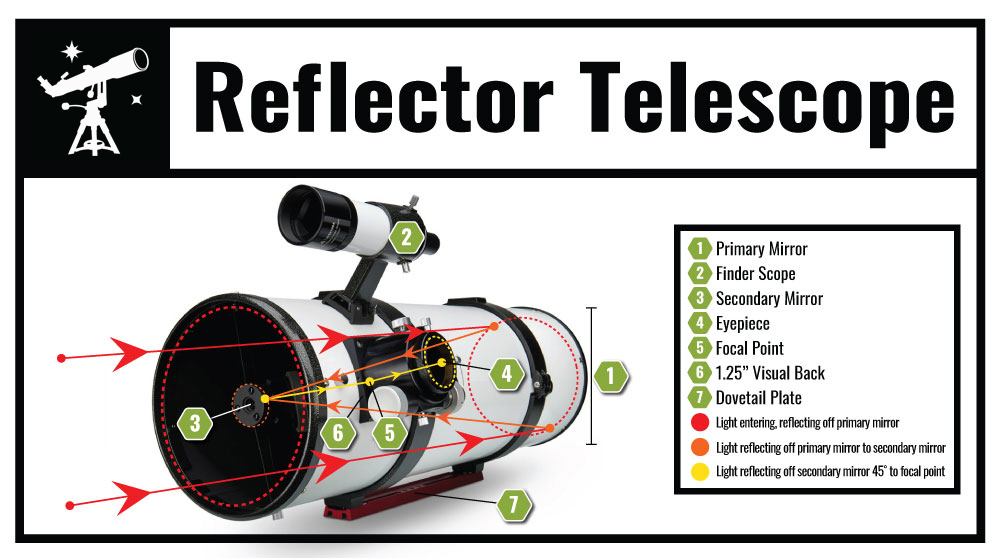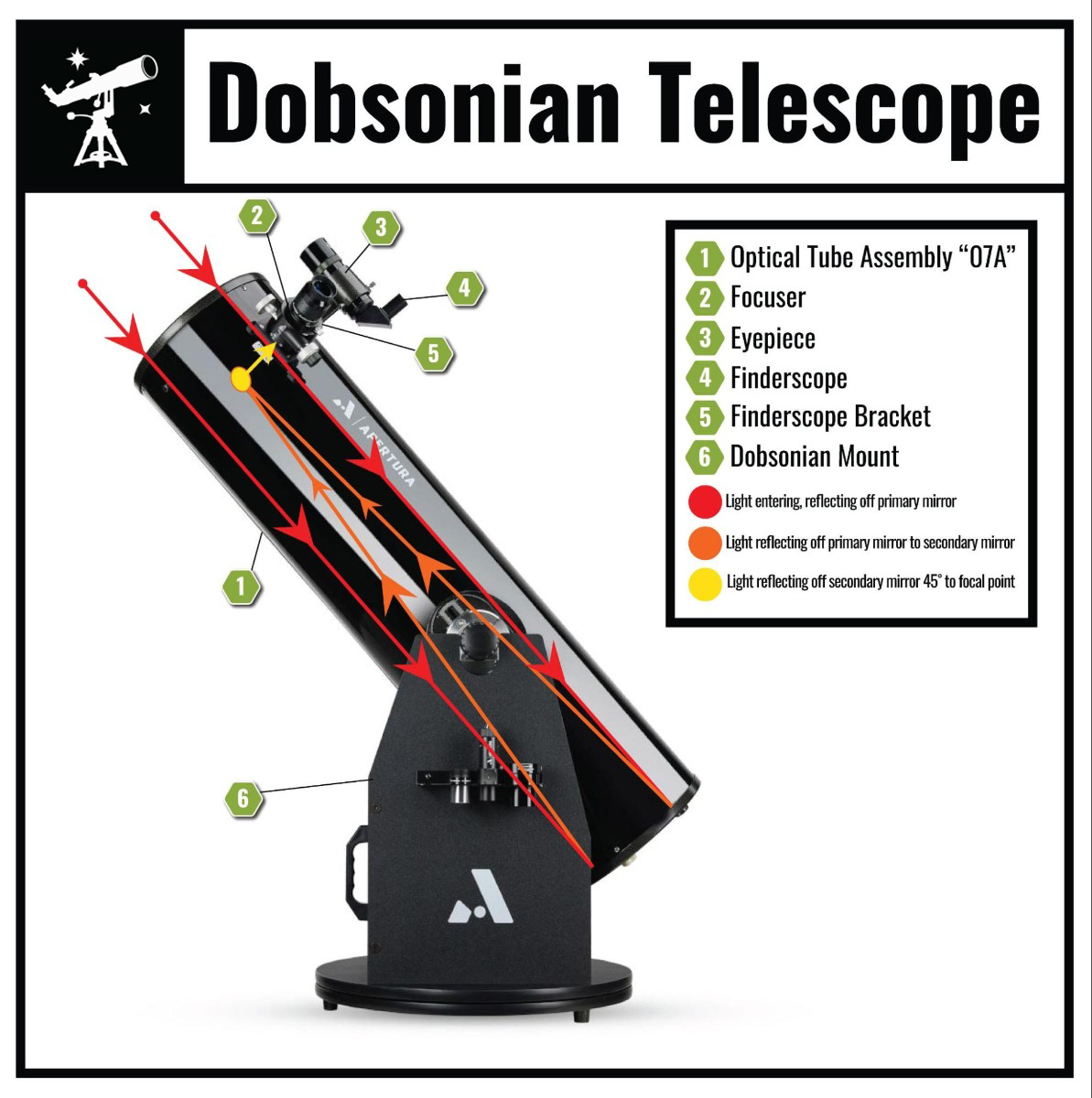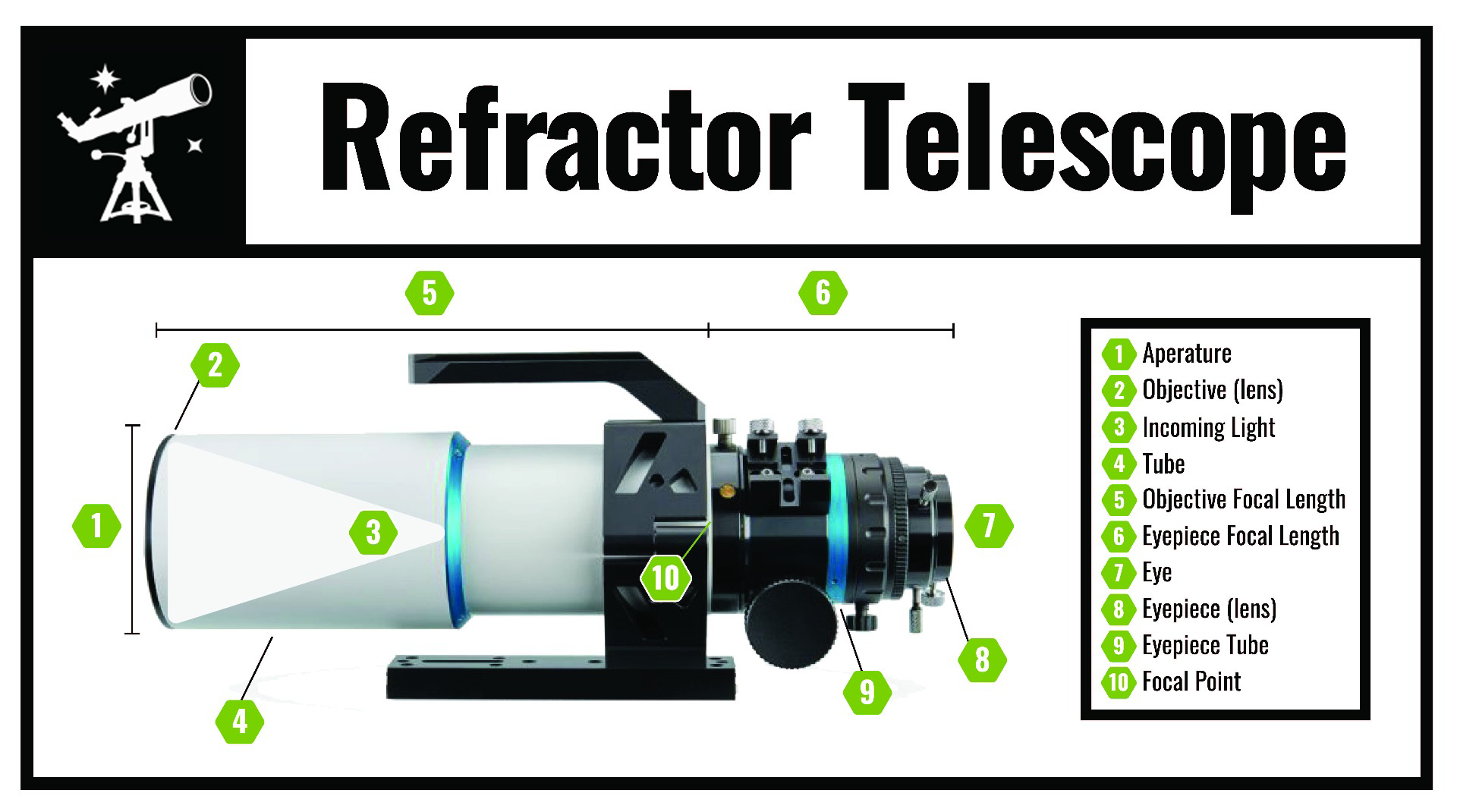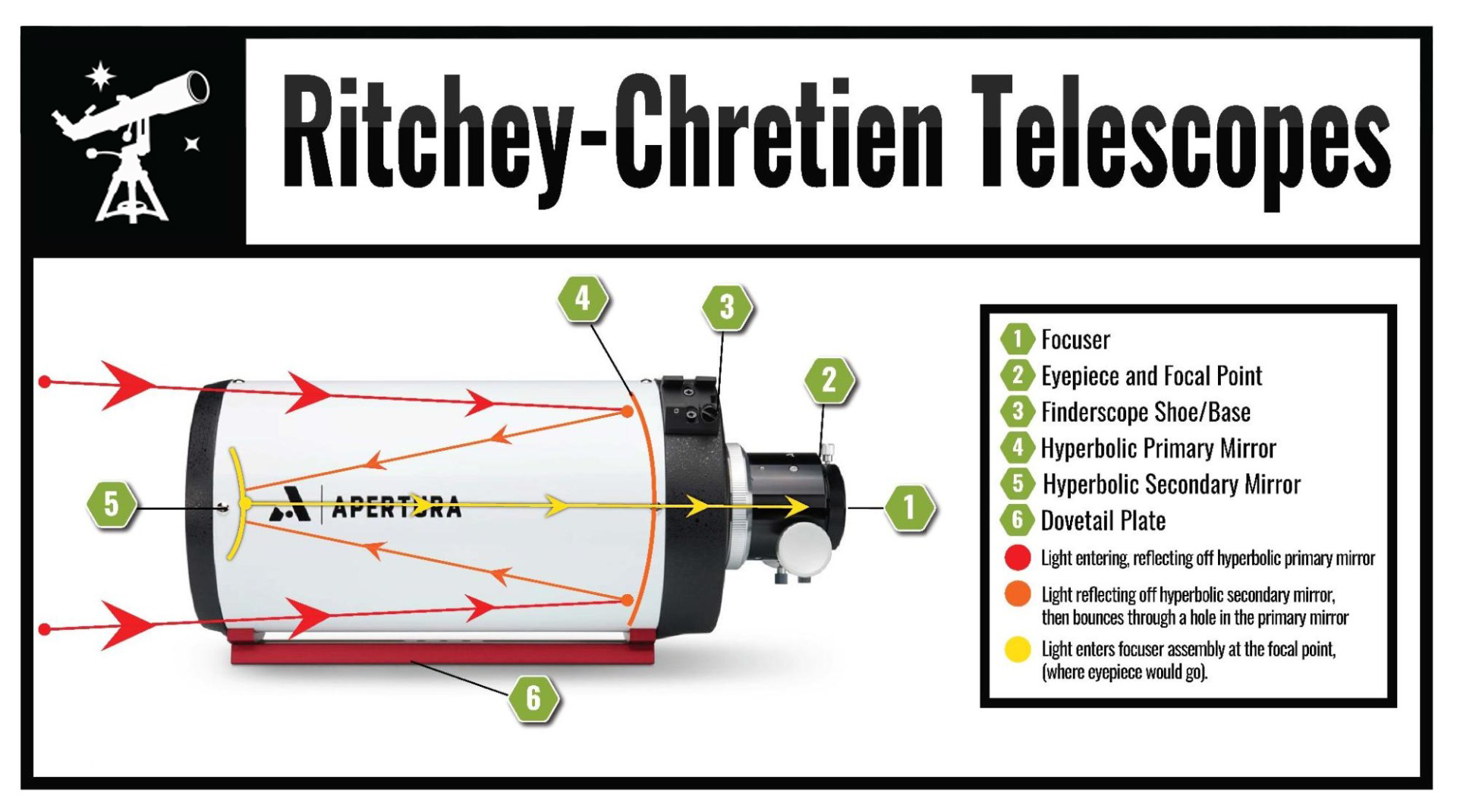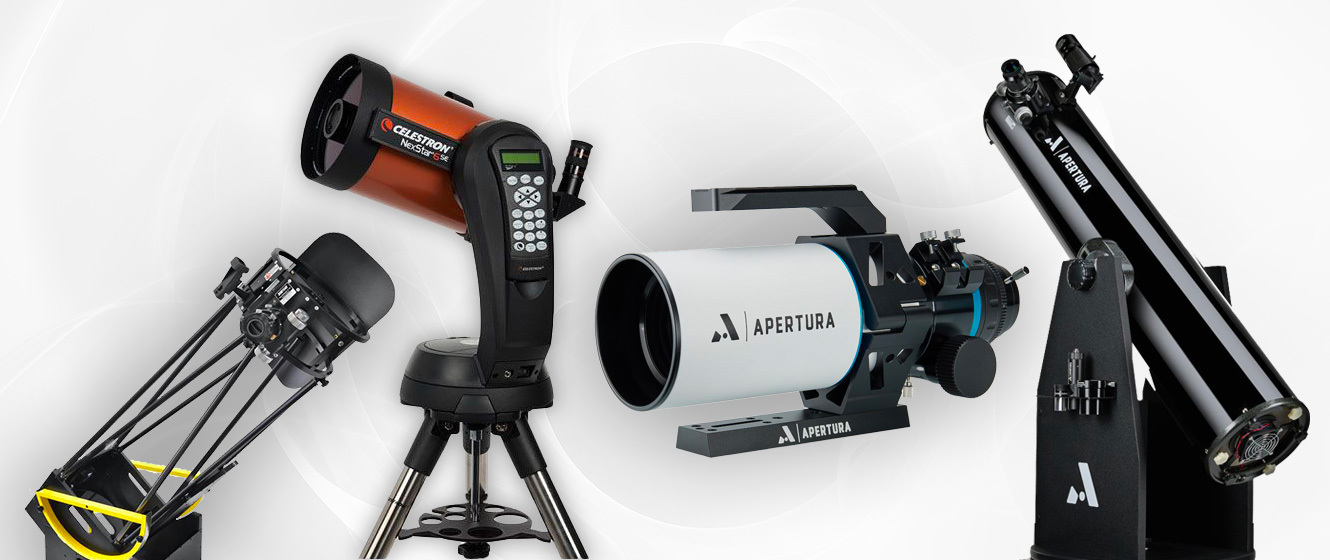
What are the Different Types of Telescopes?
There are many different types of telescopes to choose from and each has their advantages and disadvantages when compared to each other, especially in regards to what your goals are when using a telescope for either visual astronomy or astrophotography. This article will break down the features of the most popular types of telescopes and will help you to better understand the pros and cons of each.
Reflector Telescopes
A reflector telescope is one of the most cost-efficient and capable telescopes on the market. The telescope uses a parabolic mirror to reflect light from the stars to a secondary mirror. The secondary mirror is angled 45-degrees relative to the primary mirror. The light from the secondary mirror then passes through the telescope optical tube assembly (OTA), where the focuser is installed. For more information regarding the benefits (and downsides) of using a reflector telescope, check out our Beginner’s Guide to Reflector Telescopes.
Newtonian Telescope
The most common reflector telescope that you'll find on the market today is the Newtonian. Sir Isaac Newton was the first to conceive of the idea that mirrors could be used to create a magnified image in the same way that a lens could, hence the name "Newtonian". Known for their simple design and incredible light-gathering capabilities, Newtonian telescopes are a favorite among amateur astronomers.

Dobsonian Telescope
A Dobsonian telescope uses the same optical design as the Newtonian telescopes discussed above, but with a different base. This reflector telescope lives on a very simple alt azimuth mount in a similar design to a cannon mount. This makes set up and use of a large reflector telescope incredibly easy. The design was first conceived by the amateur astronomer John Dobson, who constructed these simple to use telescopes for part of his sidewalk astronomy efforts. These telescopes can be set up within minutes and collect a ton of light, making them incredibly popular for amateur astronomy.
Examples: Apertura AD Series Dobsonians

Refractor Telescopes
The refractor telescope was the very first telescope design ever utilized for astronomy. Instead of mirrors, the refractor telescope uses a lens to bend light to the focal point. These telescopes are portable, easy to set up, and can bring stunning views. For more information regarding the benefits (and downsides) of using a refractor telescope, as well as common accessories, check out our Beginners Guide to Refractor Telescopes.
Apochromatic Refractor
An apochromatic refractor uses two or three sets of lenses (as opposed to an achromatic refractor) to reduce chromatic aberration. These telescopes are usually a little heavier and are usually called “doublets” (if two lenses are used) or triplets (if three are used).
Examples: Apertura 72EDR, Apertura 60EDR

Petzval Refractor
A Petzval refractor uses several sets of lenses to correct for both coma and chromatic aberration. These telescopes are ideal for astrophotography, however, they are usually slightly more expensive.
Example: William Optics RedCat 51 with WIFD
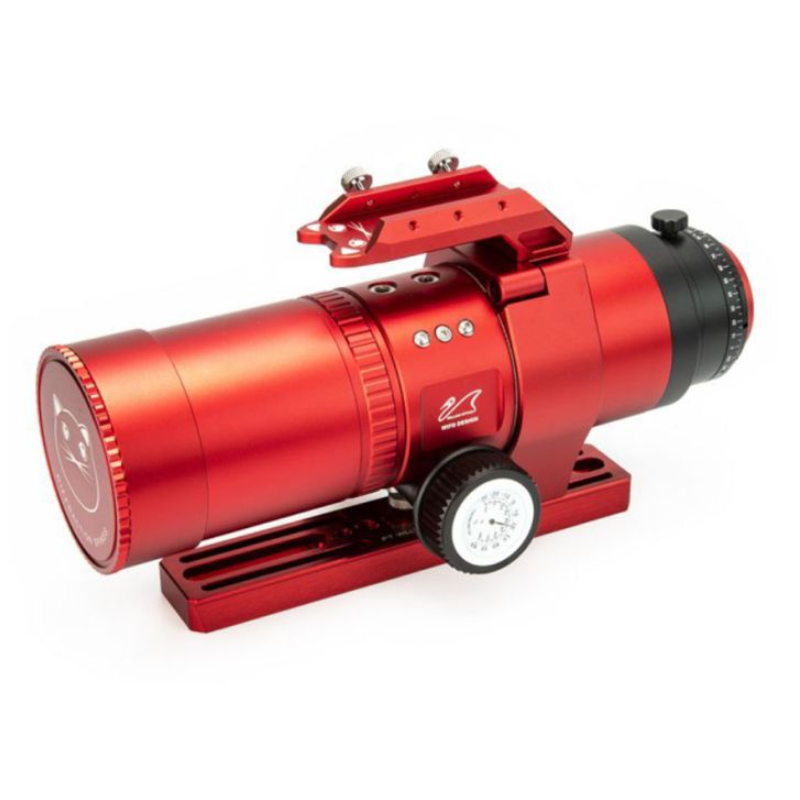
Solar Telescope
While technically any telescope can be used to observe the sun with a solar filter, most dedicated solar telescopes are small refractor telescopes that have a special filter in front to observe the Sun in a different wavelength (Hydrogen Alpha, for example). These dedicated solar telescopes enable one to observe the Sun’s solar prominences and other features that are normally obscured by the incredible light from the Sun.
Example: Coronado PST

Catadioptric Telescopes
Catadioptric telescopes use mirrors, similar to a reflector, to collect light and usually some sort of corrector plate to produce an image (however not always, in the case of the classical Cassegrain). These telescopes have a better corrected field of view than a reflector telescope and a longer focal length, making them ideal for anything, including deep-sky objects, observing the Moon, and the planets. They are also more portable than most reflector telescopes at the same aperture.
Schmidt-Cassegrain Telescope
The Schmidt-Cassegrain telescope is the most common type of catadioptric telescope. The light from the night sky passes through a Schmidt corrector plate, reflects off a parabolic mirror, and then reaches a smaller mirror parallel to the primary mirror. From the primary mirror, the light reflects back to the center of the mirror, through a hole in the center of the mirror, and into the eyepiece.
Examples: Celestron 6SE, Celestron 8SE
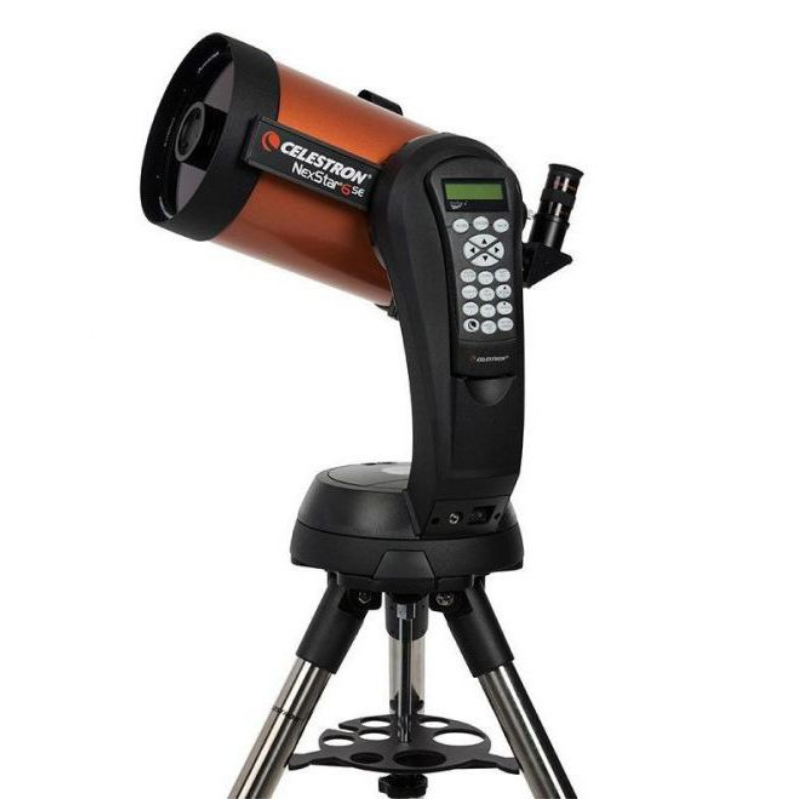
Maksutov-Cassegrain Telescope
The Maksutov-Cassegrain telescope is similar in design to the Schmidt-Cassegrain. The main difference is the correcter plate is curved (also known as a negative lens, or a meniscus corrector) to help correct for spherical aberrations. The secondary mirror is also curved to match the curvature of the corrector plate. The focal lengths for Maksutov-Cassegrains are generally higher, which makes them a fantastic choice for planetary astronomy.
Examples: Celestron 4SE, Sky-Watcher Skymax 90mm
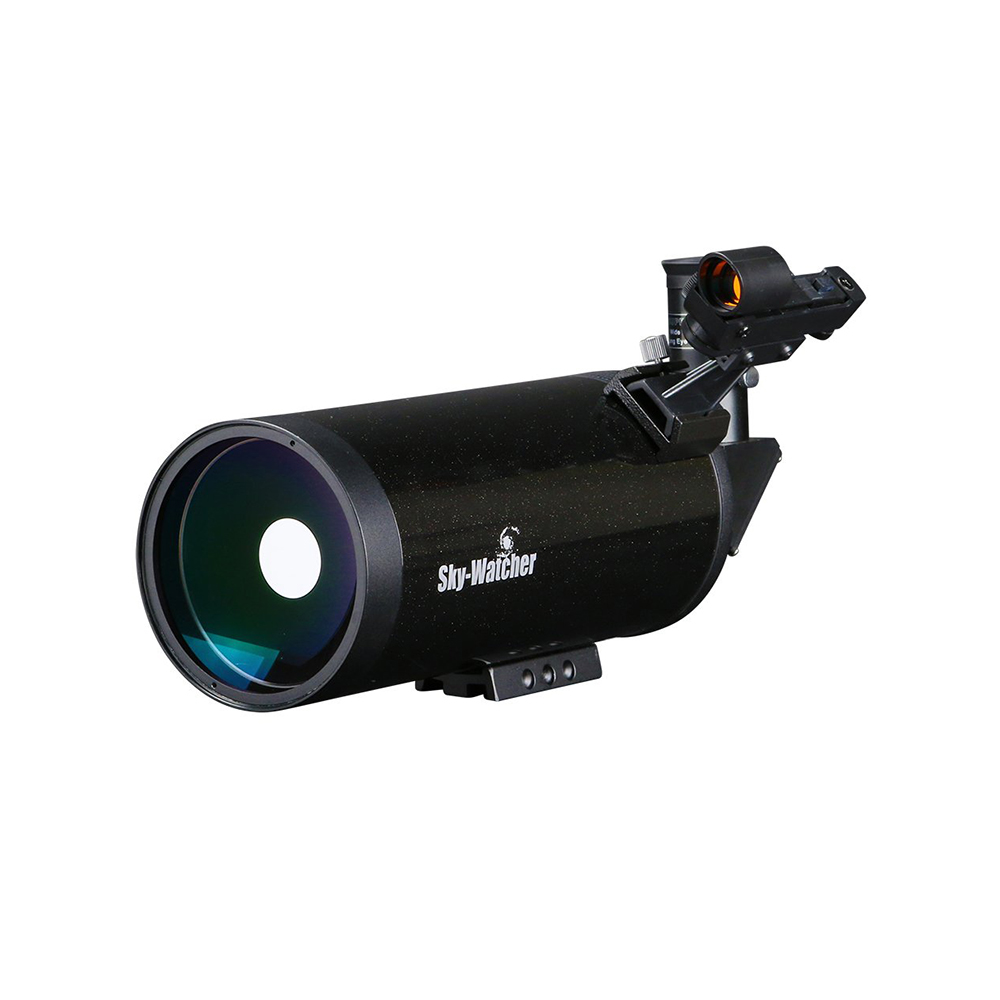
Maksutov-Newtonian Telescope
The Maksutov-Newtonian combines the benefits of a reflector telescope with a Cassegrain. Like a reflector, the Maksutov-Newtonian makes use of a large uniform parabolic mirror. The light from the mirror bounces off a secondary mirror that’s angled 45 degrees relative to the primary. The main difference, however, is that there is a corrector plate on the front of the telescope in a similar fashion to a Maksutov-Cassegrain. This effectively removes coma from your telescope, making a Maksutov-Newtonian an attractive option for astrophotography and widefield observing.
Example: Sky-Watcher Starlux 190mm
Rowe-Ackermann Schmidt Astrograph
The Rowe-Ackermann Schmidt Astrograph (RASA) is a unique telescope designed exclusively for astrophotography. Instead of being placed on the back end of the telescope on the focuser, here the camera is placed in front of the telescope. The RASA works by replacing the secondary mirror with a 4-element lens group, which dramatically reduces the focal length of the telescope (from f/10 to f/2, for example). This increases the amount of signal one can receive at the same time, making them ideal for astrophotography. However, note that it is not possible to do visual astronomy with a RASA.
Examples: Celestron 8” RASA, Celestron 11” RASA

Ritchey-Chretien Telescope
The Ritchey-Chretien Telescope is a variant of the Cassegrain that utilizes hyperbolic primary and secondary mirrors, offering a long focal length and a wider field of view. Many research-grade telescopes utilize this design, including the famous Hubble Space Telescope. These telescopes are excellent for imaging galaxies and small deep-sky objects but are not the best for visual astronomy, due to the large secondary mirror reducing the contrast in the image. Additionally, Ritchey–Chrétien telescopes require exceptionally precise collimation, and any slight bump or knock could significantly impact the quality of your view.
Examples: Apertura 6RC, iOptron 8” Photron


Questions? Contact Us!
Struggling to understand any of these telescopes? Our gear experts are here to help you pick the right one for your needs. Click the green button to contact us!
Click the arrow above to see MLA, APA, and Chicago Manual of Style citations.
MLA:
Denny, Kyle. "Types of Telescopes," AstronomyHub, High Point Scientific, 3 May 2023, https://www.highpointscientific.com/astronomy-hub/post/astronomy-101/types-of-telescopes.
APA:
Denny, K. (2023, May 3). Types of telescopes. High Point Scientific. https://www.highpointscientific.com/astronomy-hub/post/astronomy-101/types-of-telescopes
Chicago Manual of Style:
Bibliography:
Kyle Denny. "Types of Telescopes," AstronomyHub (blog), High Point Scientific, May 3, 2023. https://www.highpointscientific.com/astronomy-hub/post/astronomy-101/types-of-telescopes.
Footnote:
Kyle Denny, "Types of Telescopes," AstronomyHub, High Point Scientific, May 3, 2023. https://www.highpointscientific.com/astronomy-hub/post/astronomy-101/types-of-telescopes.
This Article was Last Updated on 05/3/2024





